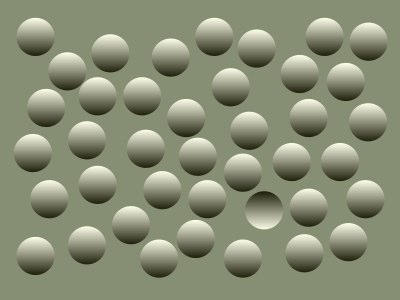The Experience Stack
Instead of a fraction of a second, we’re talking just milliseconds to spot the inverted circle. The shading completely transforms the situation. The inverted circle just pops out. What’s more, they no longer look flat.
So why is that? It’s because, essentially, there are two ways we know things about the world around us.
There are them things we figure out.
And there are them things our brains are hard-wired to deduce before we’re even conscious of the perception.
One of these latter things is 3D objects. Our brains have an optimisation built-in which is that they assume the sun – the light – always comes from above. A good assumption. That means shadows of 3D objects will be underneath, and there’s a big evolutionary advantage to being able to spot an antelope on the horizon, popping out from the background – just like these circles – because it’s lit up from above with shadows underneath.
Now, lions and other predators will have this same optimisation, and the invisible hand of evolution hasn’t been stupid when it comes to antelopes either. You’ll notice that antelopes often have a white belly. That’s because a white underneath cancels out the shadow from the sun, and the antelope becomes less like one of these shaded circles, and more like one of the flat circles on the previous slide.
